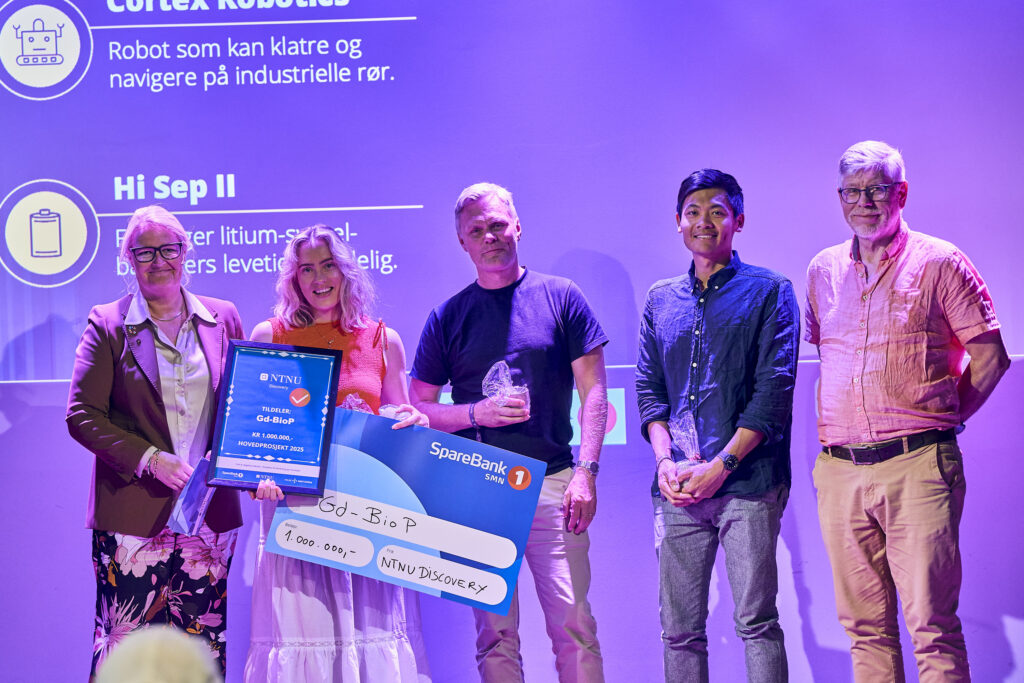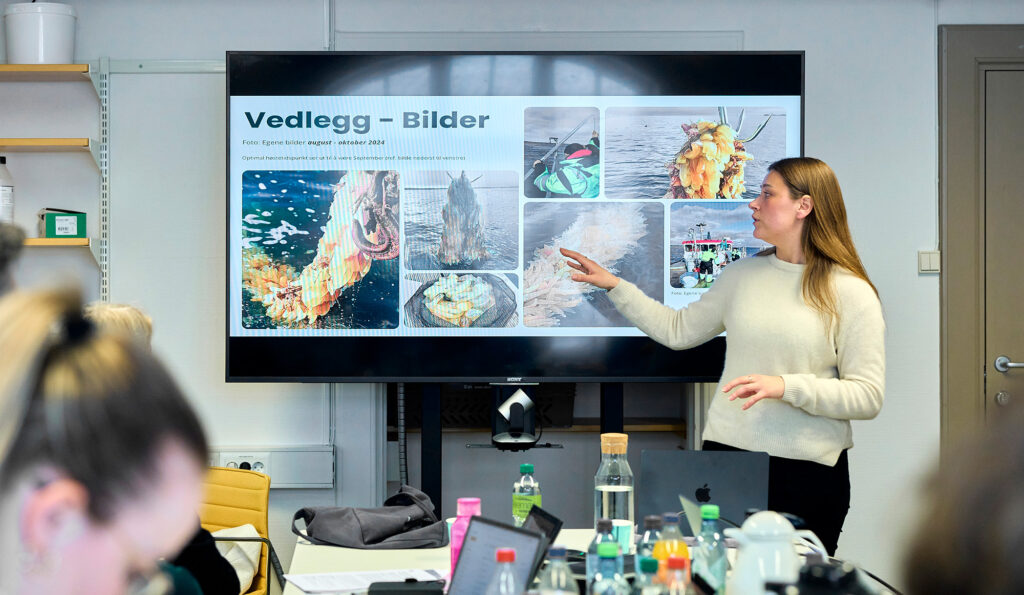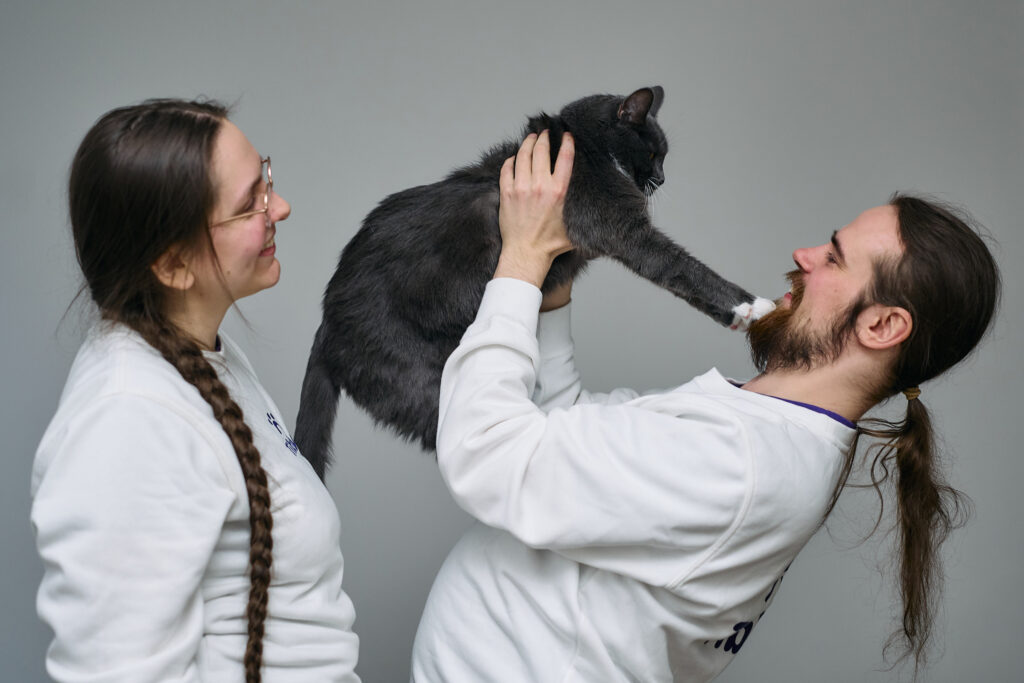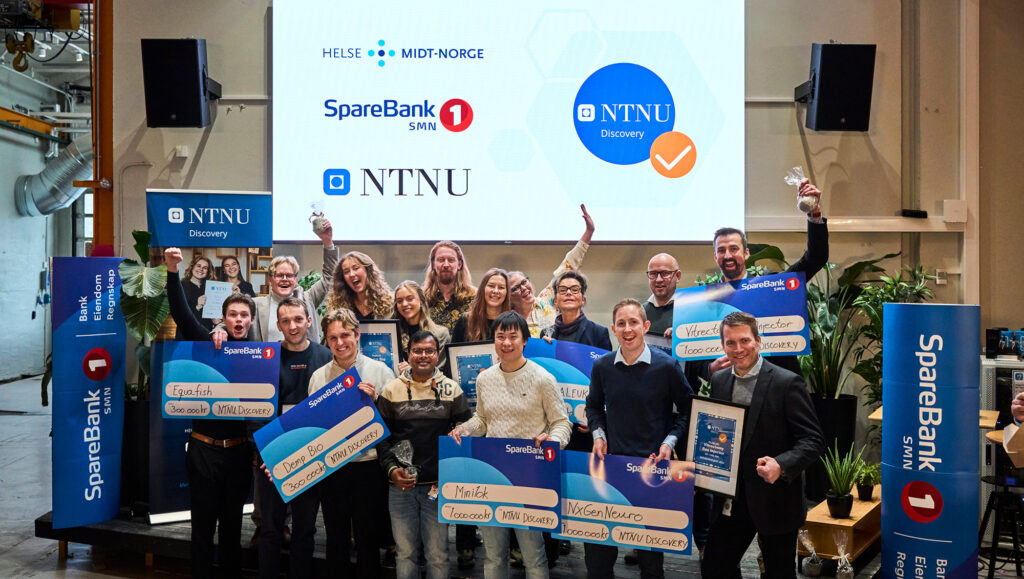Ask Knut – et system for å oppdage og identifisere is
Tekst: Anne-Lise Aakervik | Foto: synlig.no
Is er ikke bare is. Isen i Arktis kommer i hundrevis av former som alle har hver sin karakteristikk og benevnelse. Nå skal en app gjøre det mulig å kartlegge istyper på kort tid, også for de som ikke er eksperter.
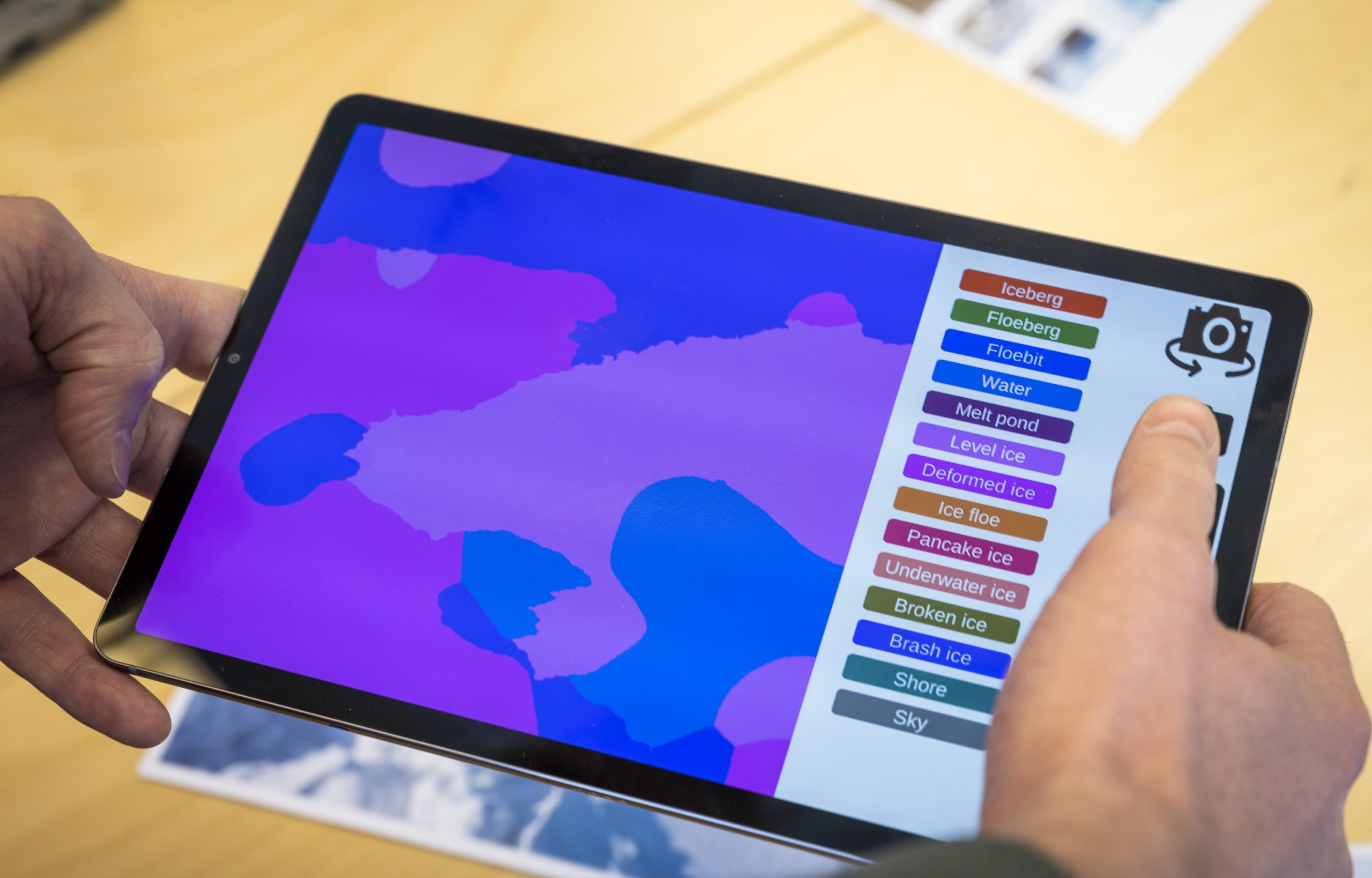
Appen utvikles ved hjelp av kunstig intelligens og maskin læring – samt en rekke bilder av is-formasjoner, havis og isberg osv. Og den som trodde at is er is, må tro om igjen. Det finnes faktisk hundrevis av forskjellige is-formasjoner.
Førsteamanuensis Ekaterina Kim ved institutt for Marin Teknikk er sentral i dette prosjektet, som har fått navnet «Ask Knut». Nå er hun i ferd med å legge ut en haug med foto av is-formasjoner på bordet.
– Et foto av et isflak avslører mye. Hva ser du her, spør hun plutselig og holder opp et foto. Jo, det kan blant annet avsløre når på året bildet er tatt, sier Kim. Og tilstand og tykkelsen sier noe om type is, og fargen viser hvor gammel eller ny den er.
Hun forteller at det finnes hundrevis av navn på istyper som alle har sine unike kvaliteter, og som forteller noe om omgivelsene de oppsto i. De fleste på engelsk: pancake ice, pinnacled iceberg, brash ice, sloping iceberg, dirty ice, frost flowers og mange flere.
Del Ditt Arktis med oss:
For å få en så god applikasjon som mulig er vi avhengig av mange flere is-bilder. Derfor spør vi deg som har vært i Arktis. Vi vil svært gjerne motta dine bilder av is-formasjoner og is spesielt fra Arktiske strøk og tatt i dårlige vær og gjerne om natta.
Alle som bidrar, blir kreditert. Hvis du vil vite og sende foto så skriv en e-post til: ole-magnus.pedersen@ntnu.no.
Arktisk forskning tjener på bruk av KI
Ekaterina Kim har i de seneste årene jobbet med kunstig intelligens (KI) og dyp læring. Og prosjektet spinner også ut fra to sterke miljø ved NTNU; SAMCoT og AMOS (Roger Skjetne m.fl.), som samarbeider med Theoharis Theoharis fra IDI om data syn og dyp læring .
Det er mange vitenskapsfolk og forskere som allerede adresserer utfordringene vi finner i Arktis. Men området mangler oppmerksomhet fra eksperter på kunstig intelligens. Dette ønsket Ekaterina å endre på. Arktis er det neste målet for bruk av Kunstig Intelligens proklamerer hun. Sammen med Ph.D. student Ole-Magnus Pedersen og sommerstudent, Nabil Panchi, begynte hun å se hva det var mulig å gjøre noe med.
– Vi fant ut at det er ingen andre som forsker på sjøis for å finne ut hvordan det er mulig å klassifisere is-objektene man ser i Arktis. Og det er en nisje vi ønsker å ta. Målet vårt er altså å utvikle et system som kan hjelpe menneskene om bord i fartøyer til å oppdage og bestemme hvilken type is-objekter man ser, for å unngå skader og ulykker.
Demokratisering av kunnskap
I hele verden er det kanskje 150 eksperter som kan is, sier Kim. Disse gjenkjenner isen på bakgrunn av hva de ser dvs. farge, konsistens, tykkelse, osv. Det kan ikke vi andre gjøre, og vi kan ikke ha med oss ekspertene 24/7 heller. Lykkes vi med Ask Knut kan vi i fremtiden bidra til å dekke gapet mellom de som ikke har kunnskaper om is og snø og de som har det. En slags demokratisering av kunnskapen.
– Etter hvert som vi har fortalt om ideen vår fant vi ut at det ikke er bare profesjonelle som ønsker å ha denne kunnskapen, men at vi også har et bredt nedslagsfelt blant vanlige folk. Og vi begynte å snakke om en app. På Svalbard har for eksempel turistindustrien økt voldsomt, både landbasert og båtbasert turisme. Dette er mennesker som er interessert i Arktis og som garantert vil kunne bruke en slik app. Det gir nye muligheter for å drive “folkeforskning». Og prosjektmidlene fra NTNU Discovery gjorde det mulig for oss å lage en prototype.
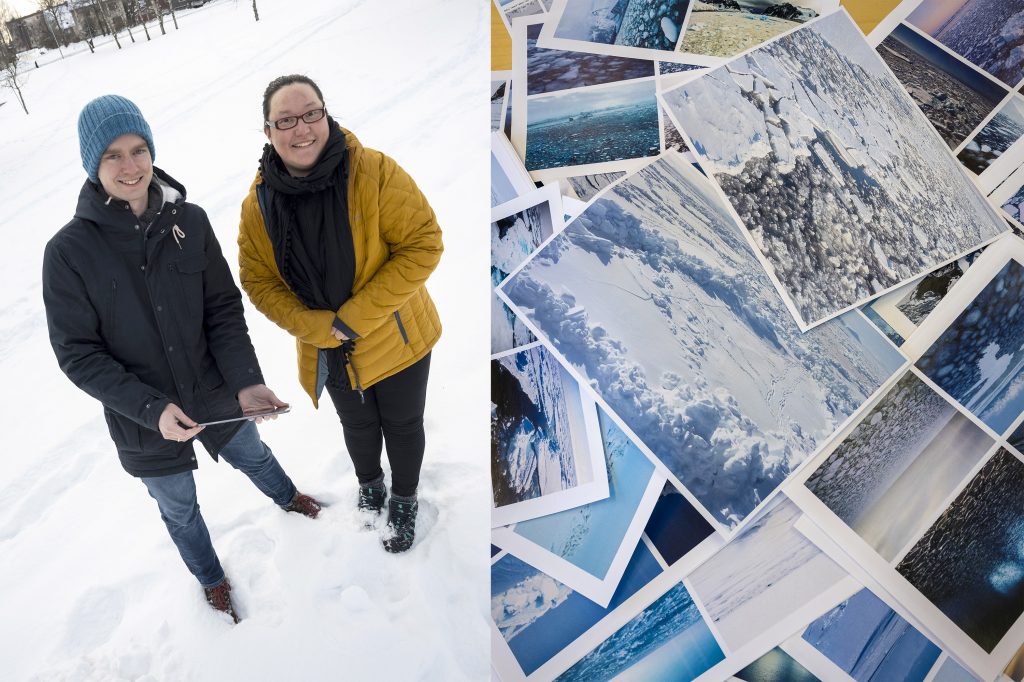
For å skape gjenkjenning har Ekaterina Kim og Ole-Magnus Pedersen matet algoritmen de har utviklet med hundrevis av bilder av is kombinert med beskrivelser av akkurat denne is-formasjonen ekstremt mange ganger. Slik kan maskinen lære forskjellene.
Store endringer
Havisen endrer seg raskere i dag enn for bare fem år siden. Vi vet også at det er en sterk forbindelse mellom havisen og klimaendringene. Og hurtigheten i endringene gjør at dagens teknologi ikke helt henger med når det handler om varsling. De har alle noen begrensninger. Satellitter er for trege og droner har sine begrensninger i forhold til vær og temperatur f.eks.
– Vår ide er å lage et enkelt og brukervennlig systemsom kan installeres på en skipsbro, og kontinuerlig skanne og filme havoverflata og klassifisere is som dukker opp. Slik kan man ta avgjørelser om dette er farlig eller ufarlig sjøis. Målet er at systemet skal kjenne igjen istyper i skodde og dårlig vær Appen skal også kunne gjenkjenne ulike typer is som du og jeg tar bilder av.
For å skape gjenkjenning har Ekaterina, Ole-Magnus, og Nabil Panchi matet algoritmen de har utviklet med hundrevis av bilder av is kombinert med beskrivelser av akkurat denne is-formasjonen ekstremt mange ganger. Slik kan maskinen lære forskjellene.
Fasinasjonen for is
Is er fascinerende, og Ekaterina Kim ble «hekta» da hun i fjerde året på NTNU gjennomførte en studietur til Svalbard. – Det var en vår-tur der vi studerte formasjoner og iskanter, samt klatrer på 2 meter høye isblokker for å måle de. Plutselig så jeg læreren min, Knut som skrapte noen miniatyr istapper fra en stor isblokk ned i en liten plastpose. Det var nesten som en scene fra en krimfilm hvor etterforskerne samler bevis. Og det overrasket meg at noen kunne se det bittelille i dette store ishavet – og at det faktisk betyr noe.
Derfor fikk prosjektet navnet «Ask Knut», etter læreren min. Ekaterina smiler bredt. En fin historie å ha med seg videre.
De ønsker at appen også kan bidra til forskningen. – I et forskningsperspektiv er det viktig å observere isbreene og isbergene jevnlig. Det er viktige i forhold til smelting – og ferskvannskvaliteten. Med denne appen vil man kunne observere, filme, og klassifisere is fra dag til dag over korte og lengre perioder. På sikt er planene å lisensiere teknologien til interesserte industriaktører.
Fakta IS:
Is er et mineral av oksidklassen som er fellesnevneren for de 14 kjente faste fasene av vann. I en ikke-vitenskapelig kontekst, blir derimot is brukt om formen Ih, som er den vanligste av disse fasene i Jordas biosfære. Denne istypen er en myk og skjør krystall som kan se gjennomsiktig ut eller ha en matt blåhvit farge, avhengig av hvor ren luften er. Er det andre stoffer som jord blandet inn i isen, kan den se annerledes ut. Den vanligste faseovergangen til Ih er når vann blir avkjølt til under 0 °C ved standard atmosfæretrykk. Den kan også sublimere fra vanndamp uten å gå om den flytende fasen, slik som ved rimfrost. Is kan oppstå i mange forskjellige former slik som hagl, isbiter og isbreer, og spiller en viktig rolle i mange meteorologiske fenomener. Iskappene over polarområdene er viktige for det globale klimaet og særlig i vannsyklusen. Is dannet naturlig kalles naturis. Kilde: Wikipedia
Vil du vite mer så sjekk Encyclopedia
Prosjekter og nyheter
Kontakt:
Prosjektleder
Jan Hassel
Epost: jan.hassel@ntnu.no
Telefon: 906 53 180
Kontor: Hovedbygget, sokkel
Håvard Wibe
Epost: havard.wibe@ntnu.no
Telefon: 41 47 37 68
Kontor: Hovedbygget, sokkel


